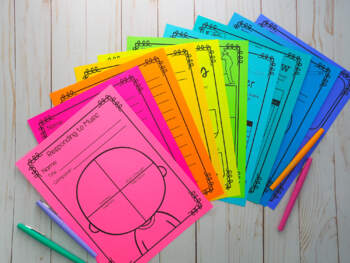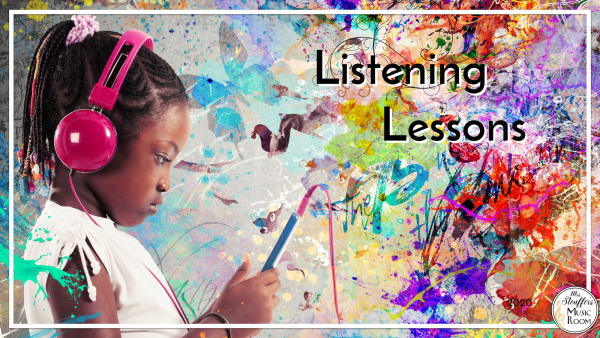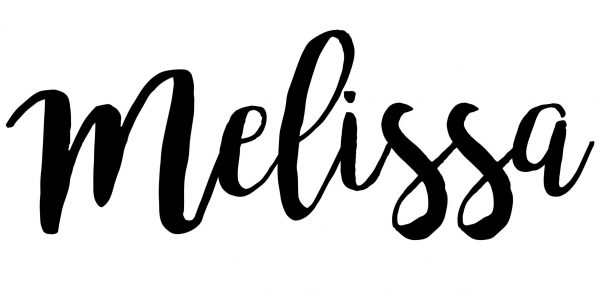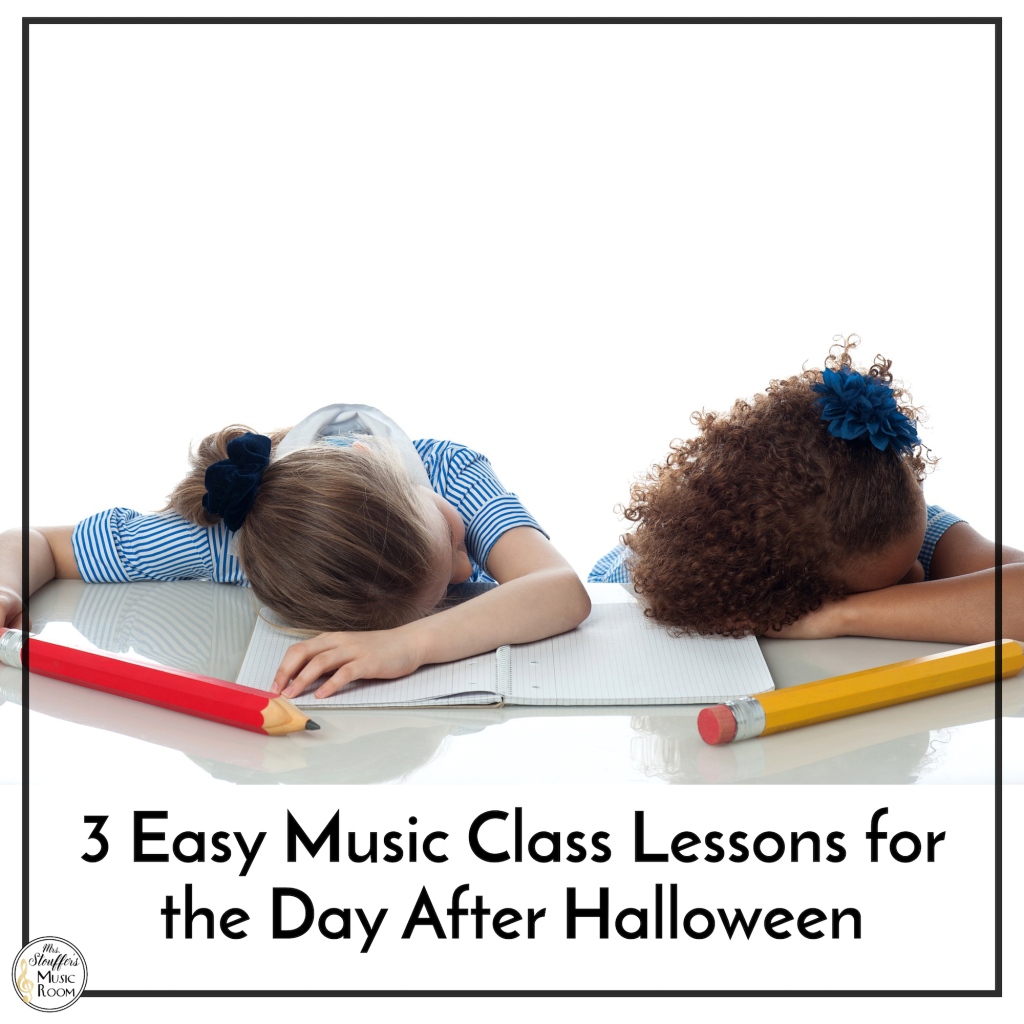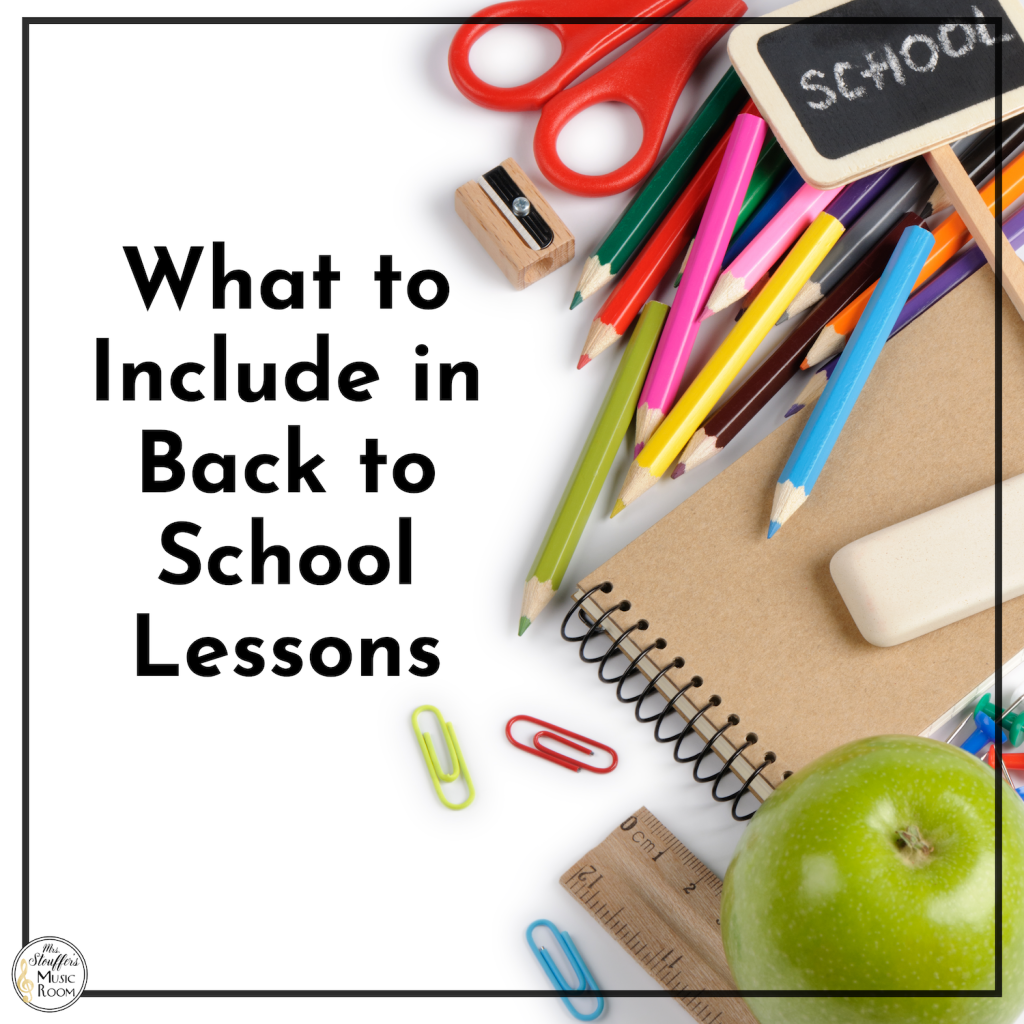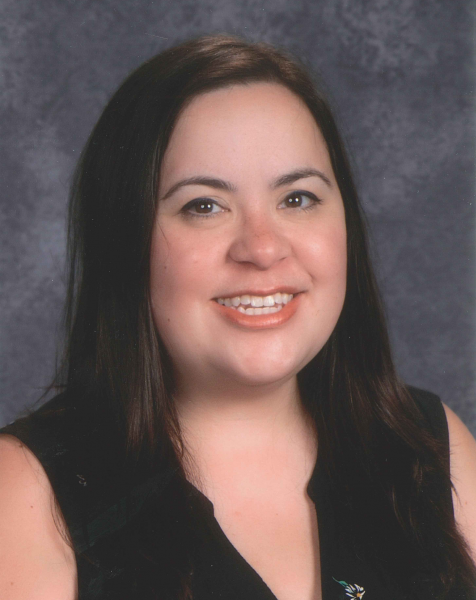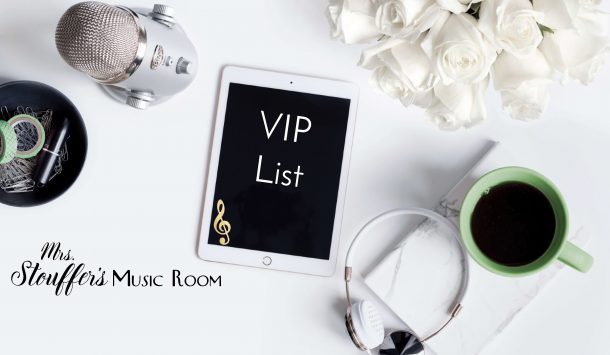I love doing listening activities with my students, but I know there are a lot of people who don’t have the time to create their own new ones.
I get it; we’re all short on time. This is why I wrote this post on music class listening activities.
Music class listening activities should have some structure around them, be engaging and active, and use only the highest quality of music. My favorites include:
Why Do Music Listening Lessons?
Listening lessons are a great tool. There’s a lot of great things about them.
- Cultural Connection – ones represented in your class and ones that may not be. It’s important to cover a variety of cultures
- Respond appropriately to music
- Social-emotional – help students find the correct words for emotions they feel in response to music
- Engaging for kids
- Video in addition – wonderful ways to give them a true experience instead of staring across the room
- Not just for older students – even your youngest kids should get the experience of sitting and listening. Short examples are great for them, or just a few moments
- Modeling – show correct technique
- Exposure from appropriate venues – it is easy in the YouTube age to find a video of big-name performers, the correct cultural venues, and people who are legitimate culture bearers.
- Historical reference – what better than actually watching the people we talk about? Videos are around for almost 100 years of performers and even longer for recordings. These are awesome resources.
- And right now – no singing, shared materials, or disinfecting involved.
Where To Find Music Class Listening Activities
As you may not know, there are lots of places you can get great listening ideas online. When you are searching, try using specific words to help you find a good variety of people.
Not only is it important to find composers and musicians from a variety of backgrounds and cultures, it’s a great idea to make sure you are also including different genres and styles.
When you are searching in search engines or on YouTube, there are some words to help you find different examples:
- Composers from…
- Women composers
- LGTBQ Composers
- ….. Composers
- Composers you should know who are…
- CPDL.org (Choral Public Domain Library)
- Daffodil Perspective – An inclusive classical music radio show
- Musicians from…
- In Facebook groups, there are often threads about lesser-known composers, living composers, and composers who …
- YouTube – look for specific instruments, countries, or ensemble types
Bonus words: folk, traditional, instruments, dance. - Institute for Composer Diversity
- I Care If You Listen (ICIYL) – Dedicated to contemporary classical music
Other places to look
- https://folkways.si.edu – lots of authentic recordings,
- http://folksong.org.nz – authentic recordings, lyrics, and folk songs from New Zealand
- https://www.mamalisa.com – lyrics and great links to listening
- Beth’s Music Notes – source for titles that you can search
- kodaly.hnu.edu – recordings and analyzed folk songs
My Favorite Music Class Listening Activities
I spent hours and hours this summer making a super-comprehensive list for my students.
This file has 32 examples for K-5 (no repeats!) It includes name, the category they were selected for (although they may be long to more than one), country they were born in, dates of birth and if applicable, death, a YouTube listening link as well as a matching link for SafeYouTube.
This resource was made with inclusivity in mind.The idea is that students hear more than traditional selections, so there are two selections of the following categories for each grade:
Latin America, African American, Women, Asia, Film Composer, American Composer, Jazz/Blues, YouTube, European Classical, Bluegrass/Folk, Band Music, Choral Music, LGTBQ, and Broadway.
While it isn’t for everybody, it has a lot of variety which is what I think is the most important in finding listening examples. Most importantly, it represents a wide variety of cultures and backgrounds. In other words, your students can see themselves represented.
There are also two selections per grade that are not in these categories and those include two selections that vary including Rock, Spirituals, Australian Composer, Piano music, Motown, Big Band, African Composer, Hip Hop, Pop culture, Gospel, American Crooner, Opera, Men’s Choir, and Aboriginal Music.
You can check out 32 Weeks of Listening here.
Listening Reactions
If you are looking for ways to help your students through guided listening, this set of worksheets is an awesome accompaniment to any listening activity for the music classroom. This set has responding to music pages for a variety of situations. Check it out here.
